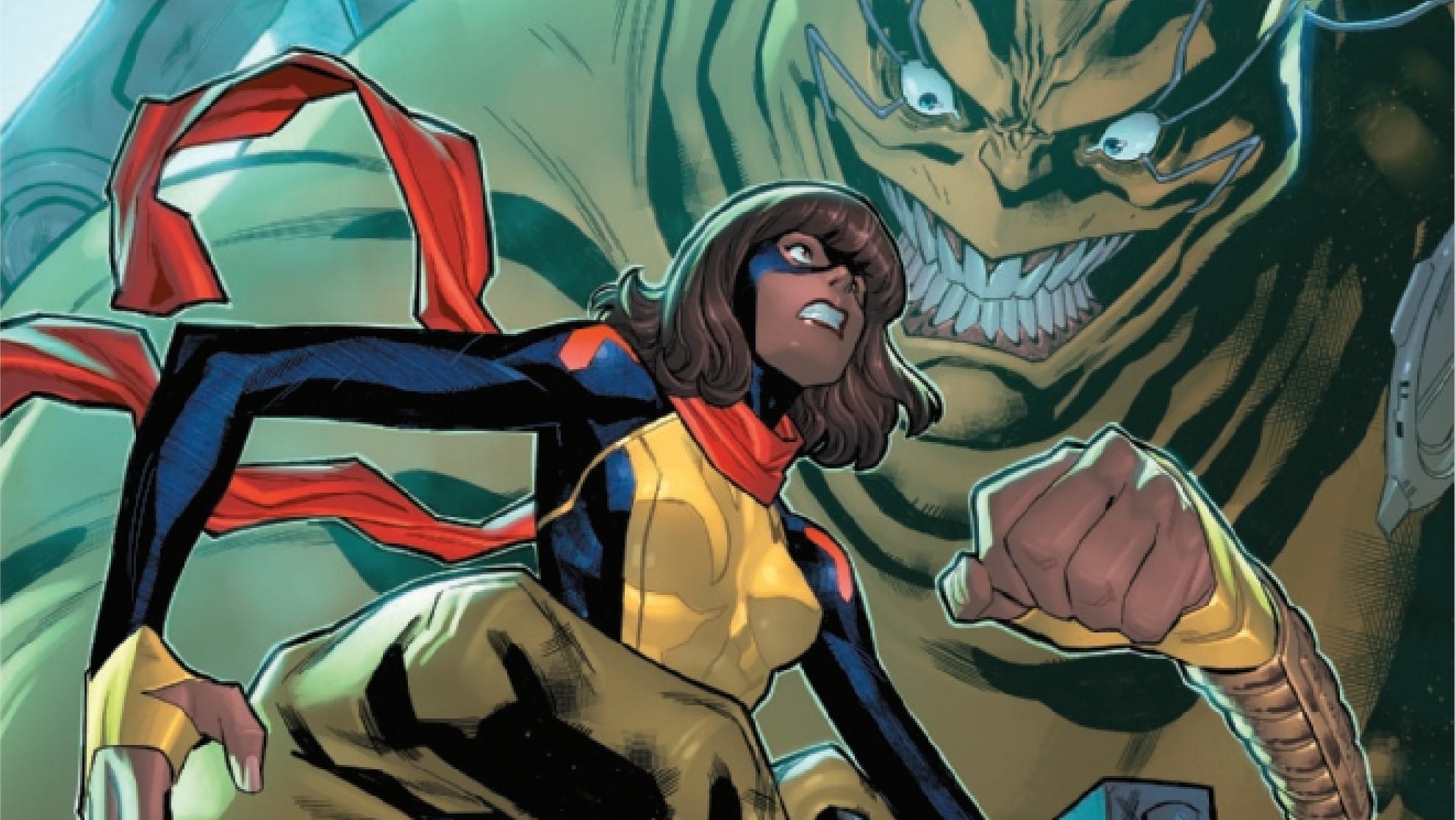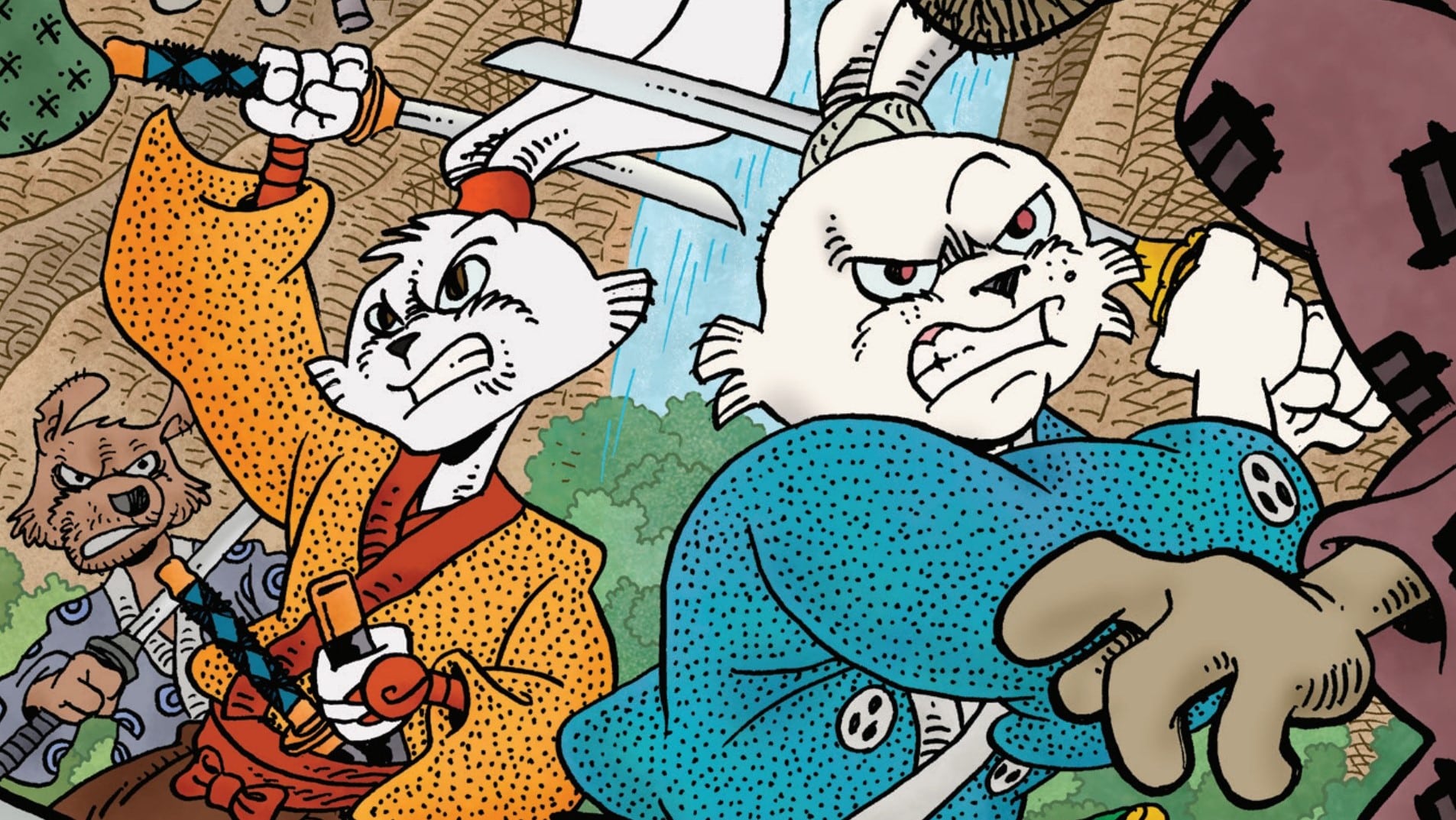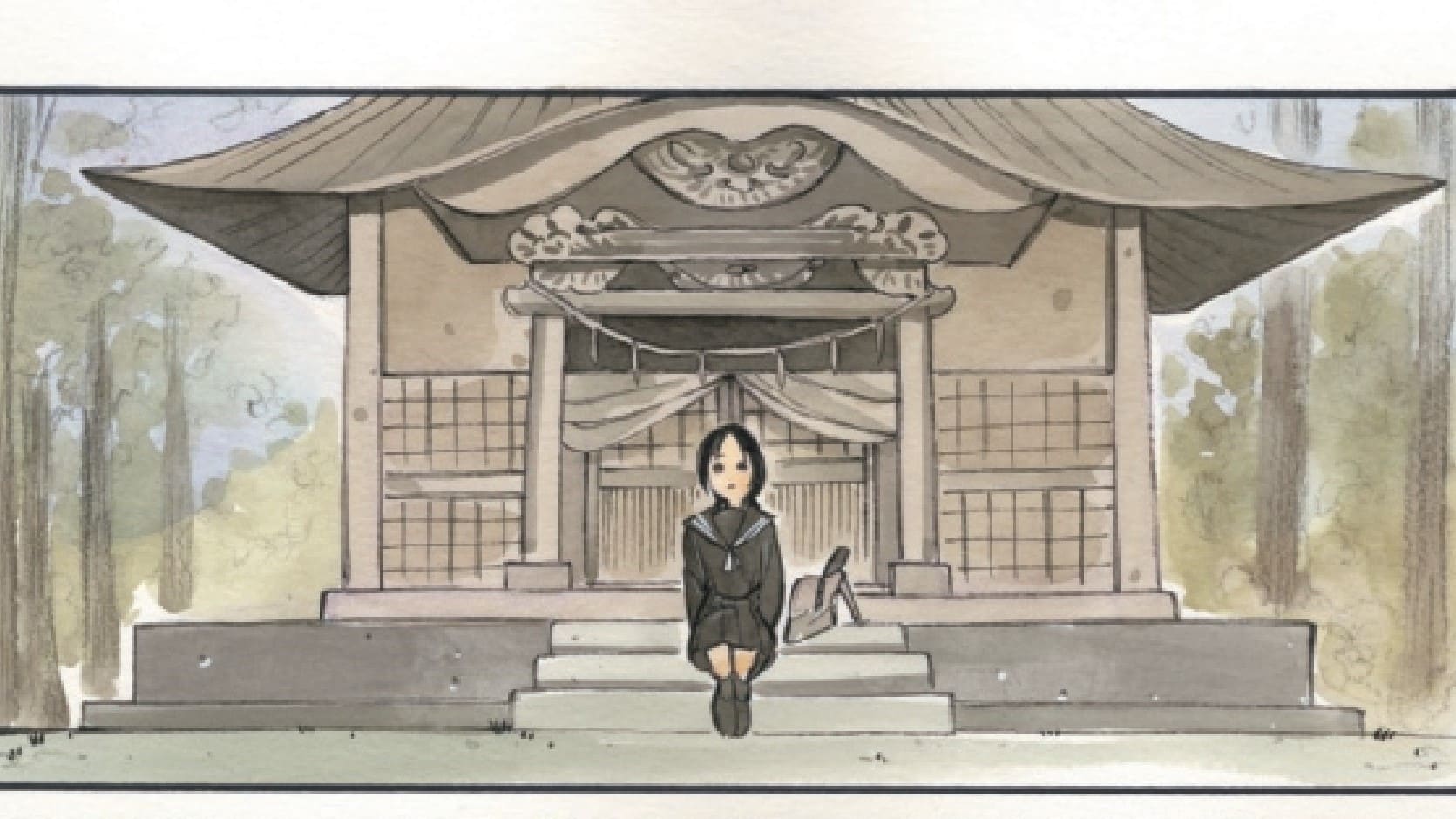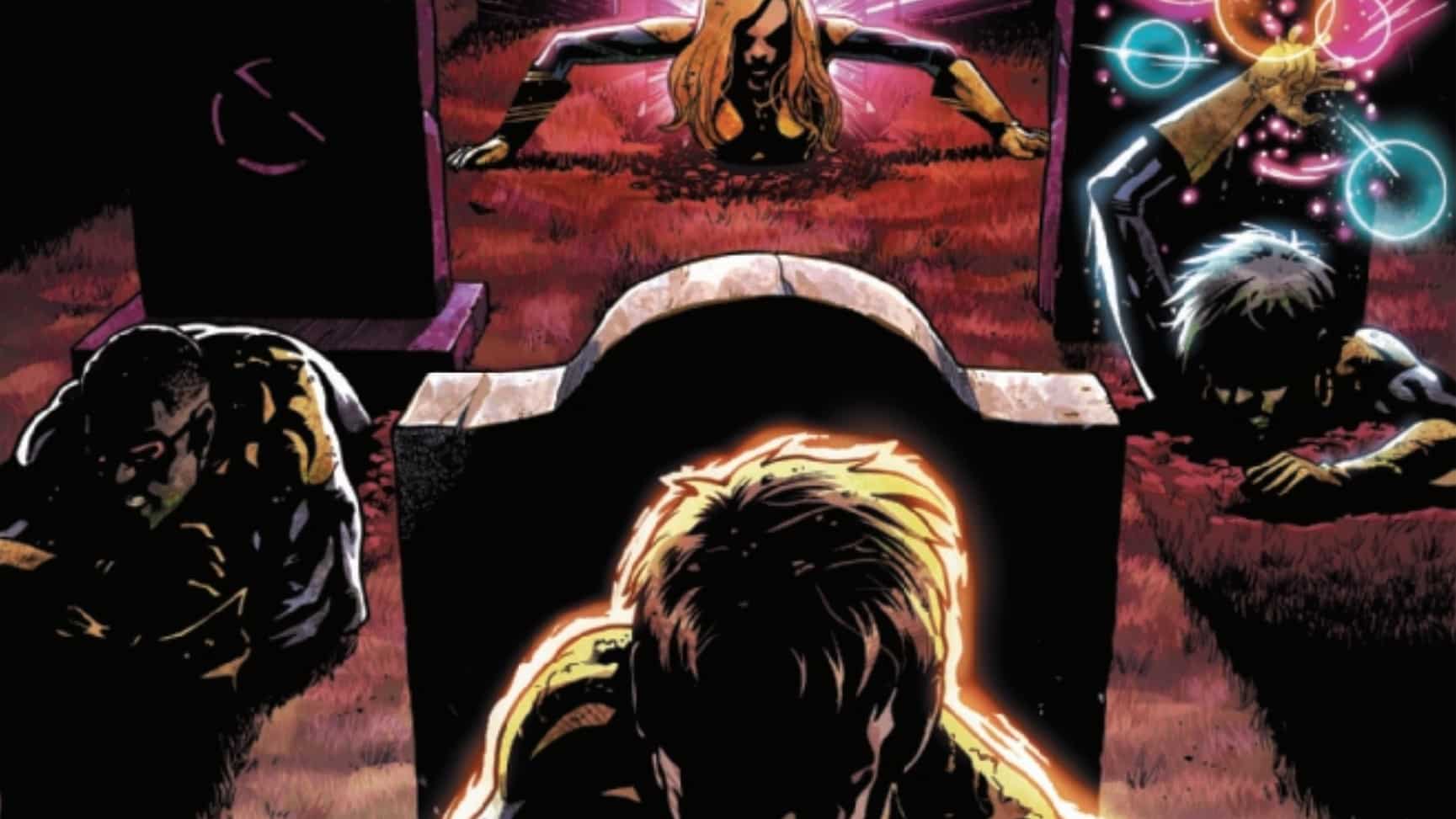The birth of a prophesied child in Mumbai heralds the start of a new age — one that brings peace, prosperity and most notably eternal life — meaning the Avatar of Death is out of a job. As Brahma sends her hurtling down to Earth to enjoy her retirement as a mortal, a last-minute deal places her in the body of one Laila Starr — someone close enough to end this pesky prophet of a child for good. But can she follow through? Written by Ram V and illustrated by Filipe Andrade, with color assists by Inês Amaro and lettering by AndWorld Design.
Armaan Babu: I love mythology, and I love alternate universe twists on classic characters, and bless The Many Deaths of Laila Starr for giving me the best of both worlds with its spin on Hindu deities. This has been a great excuse to brush up on all the Hindu mythology I’m rusty on, and I’m extra curious as to how this reads from an outside perspective — which makes me thrilled to be discussing this with you, Andrea. Hi!
Andrea Ayres: Hello, Armaan! I am so excited to be able to write with you finally. An outside perspective is definitely the correct phrasing for me! I must admit to knowing exceptionally little about Hindu mythology. Still, when I found out about this series a few months back, I was immediately into the premise for the same reasons you cite. Give me an alternate universe any day of the week. I cannot wait to hear what you thought of the issue; let’s dive in, shall we?
Letting Death Go — Benefits, Severance and All

AB: So the one thing you ought to know about Hindu mythology is that it’s a mess, continuity-wise. If the more popular mythologies (I’m thinking Norse, Greek) are like the Justice League — stories about a handful of core characters with a rotating cast of others — then Hindu mythology leans decidedly more X-Men. There are hundreds of characters involved, and no one’s quite sure what’s canon and what isn’t. We’re presented with a very simplified version of things here, though. What do you think of this corporate culture approach to the work of the gods?
AA: First, I cannot tell you how much I adore your explanation of Hindu mythology. That’s incredibly helpful to this novice. Using corporate culture, which many people will have a passing familiarity with, to introduce the work of the gods was *chef’s kiss.* The line on Page 7, “Umm… It’s death, sir. She’s here for your morning meeting?” The scene immediately situates the reader in the middle of the long and ongoing interpersonal dynamics between these characters. There’s a clear sense of who they are to one another, and that knowledge is possible using the analogous convention of the workplace. Even though the characters are entirely new, though I am unfamiliar with the mythology, I found myself wildly entertained by the premise of gods in an Office Space-type setting. What’d you think about the scene where Death is let go due to restructuring?
AB: I was greatly amused by this. Brahma — the creator of the world, the gods and even the egg from which he was born (at least, according to one interpretation) — as a doddering old CEO at the mercy of prophetic paperwork is the exact kind of silliness that makes mythology fun. More than that, though, I love Death’s design. It’s weird that she’s not named, but Death clearly appears to be Kali, with her six arms all perfectly tailored and jazzed up to the nines. Even funnier, though, is how the birth of a child prophesied to bring eternal life for all means that Death’s out of a job. Eternal life is talked about in a number of prophecies — but the fact that that would put Death out of a job is the exact kind of oversight that makes this such a great hook. What do you think of Death herself?
AA: I am so glad you asked because the design of Death — in fact, the design of the entire issue — is just fresh as hell. It’s modern and vibrant in the exact way I love. The fact that Death wears a tailored-ass suit with six arms is just; I enjoyed the shit of that. Her hair, the earrings? I can’t. Don’t even get me started on the lipstick because I want it, and I need it. There’s such a beautiful dialogue between the vibrant colors and the more washed-out pastels. To try to put it into words, incorrect as they may be, it feels deeply feminine. The purple, blue, pink, teal, I think these are highly emotional colors. They hint at a complexity and vibrancy which pulsates as we progress in this issue.
AB: I absolutely love the way you capture the mood the art conveys in this book — every page is gorgeous.
The First Death of Laila Starr

AA: We first meet Laila at a college party where she is sitting on a window ledge, clearly thinking about anything else but where she is, the man talking to her or what her life post-school might look like. We don’t know much about Laila before she falls to her death. The scene on Page 10 where we see Laila falling, the birth of a baby by Mrs. Shah and Death leaving the office with a box of belongings. We find out that Death’s punishment is to live a mortal life, and let me tell you, Death is not pleased. But she does get a helpful handbook about the pleasures of an “extraordinary life after godhood.” The series of panels involving the reanimation of Starr’s body is gorgeous. I’d love to know what you thought about our introduction to Starr?
AB: I. Am. Confused.
Considering this title is named after her, we learn very little about Laila Starr before her death — she’s not even a voice in Death’s head once Death’s occupying Starr’s body. An orphan, no friends, no family — the book goes out of its way to make her as blank a slate as possible, so naturally I’m more intrigued than ever. Who was she, what did she want from life (or, um, the lack of it), and does her mind, or her soul come back at any point? Why was she even at a house party in one of the poshest parts of Mumbai when she clearly did not want to be there?
It’s extra frustrating considering how great an introduction she had. You’ve spoken about the great use of colors this book has, but I also want to appreciate how the fluid, cartoonish lines for each character lend themselves so well to expressiveness. There was a lot going on behind Laila Starr’s eyes — though of course, now, there’s something else (no, someone else) — behind them entirely. How did you enjoy Death’s first steps as a mortal, and her new ghost companion?
AA: I enjoyed being frustrated by the lack of knowledge about who Starr was. She sat at a window’s edge, her life seemingly before her, and with a literal bang, we are denied access. It’s a great tension between wanting to know everything we can and wanting to keep us curious and looking for clues and hints. I am so happy you brought the expressive lines up. It gives the issue such an attitude. The cross hatching on Death’s arms as she awakens in Starr’s body for the first time contrasted against the otherworldly outline of her ghost companion? It’s a juxtaposition between these two characters that provides such a grounding for their emotional state and the mood of the scene. Speaking of Death’s ghost companion, I love how she is already frustrating Death’s plans to find and kill Darius, the baby who will grow up to invent immortality. “You’re going to kill a baby because you got fired?” I’d be curious to know your thoughts about Death’s companion and her introduction to mortality?
AB: Munmun’s adorable. I have no idea whether we’re going to see her again, but she was a very sweet part of the comic. I like the idea of a ghost, hovering just outside Death’s realm, helping to introduce her to the mortal world. Someone with an ethereal foot in both worlds giving Death some context for life. Death has, of course, been responsible for the deaths of trillions, but I get the sense that it’s never been personal until now. Munmun helps make it so — and makes an excellent foil for Death’s plans to kill Prophecy Baby, despite being Death’s ally. I hope she returns!
But she’s not the only one prepped to teach Death what life’s really about, is she?
AA: Munmun is adorable! I like the dynamic this issue sets up for getting the reader to consider purpose, life, free will and what it means to have a responsibility to each of those. Like you say, it seems like Death is going to be learning a lot about what it means to live.
The Girl Who Died and Lived and Died Again

AA: So, turns out living is much more complicated than Death realizes. In her effort to alleviate the Prophecy Baby from the equation she ends up getting run over by a 12-wheeler. Ouch. All we seem to know about Starr’s second life is that she’s woken up eight years later having been saved by Pranah.
AB: Pranah, the God of Life, who is revealed to be the narrator of this comic, and also who, as far as I can find, seems to be an entirely made-up deity, just for this comic. Considering just how many Hindu deities there are, this one definitely caught me by surprise — though “Pranah” itself means life, or the breath of life — aptly named, for sure. What surprised me more, however, is that eight-year time jump, implying this series has a much larger scope than I was expecting. What do you think the time jump means for the future of this series, Andrea?
AA: I totally agree with you, that eight-year jump had me thinking this story is going to be massive! I can’t even begin to grapple with what it might mean for the future of the series, and to be honest, that’s wonderfully refreshing. I don’t want to know where it’s going, I just want to come along for the ride.
AB: I know I’m looking forward to more reinterpretations of Hindu mythology here, and the gorgeous design work that comes with. I’m definitely looking forward to exploring Mumbai some more. I have no idea where it’s going either, but the ride so far has been excellent.
Musings from Mumbai
- Current tally for the deaths of Laila Starr: 2
- It should be noted that the word ‘thug’ originated from the bandit followers of Kali, and I am both waiting for and dreading a “thug life” joke to slip in sometime in future issues.
- While there is no God of Taxes, Lakshmi is the Goddess of Wealth, and is given a lot of significance here in India. A corner office seems appropriate.







